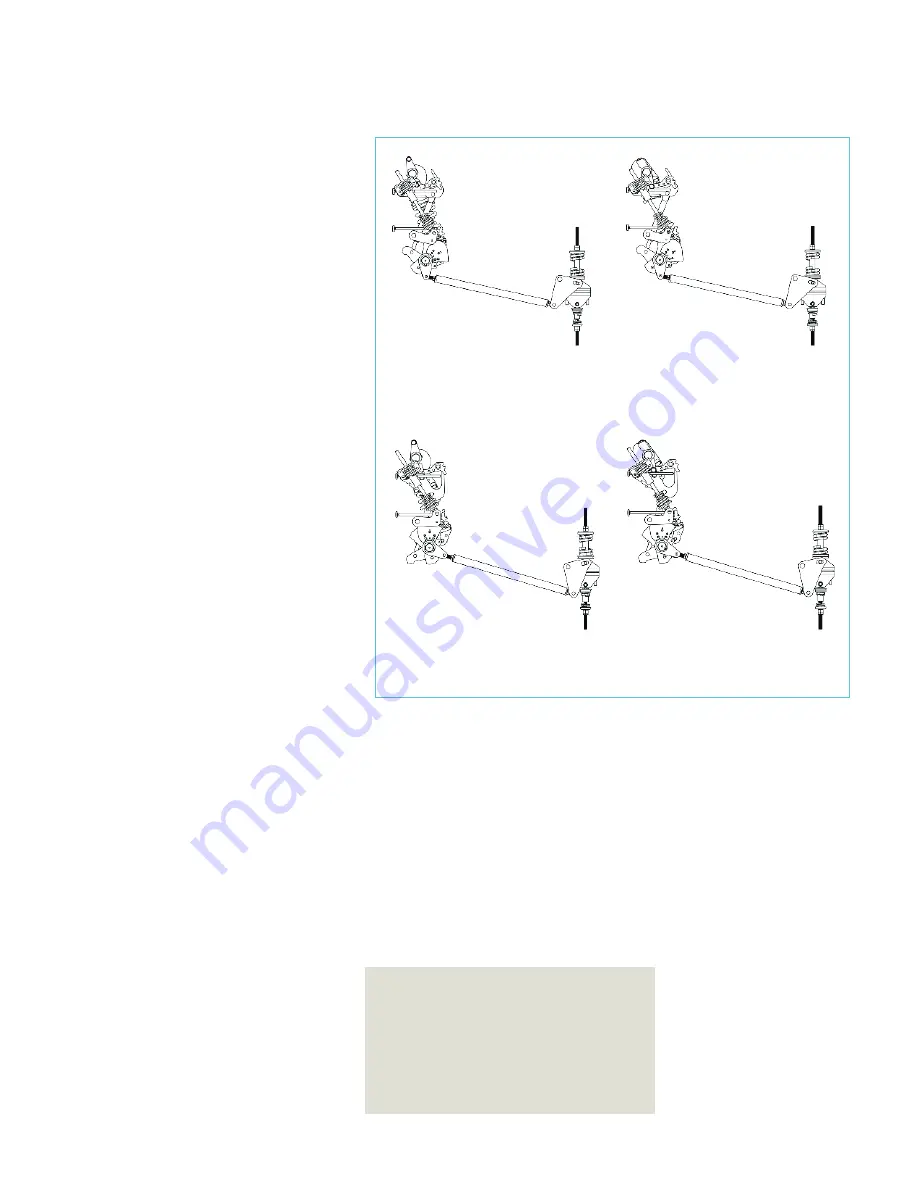
29
Instruction manual
| Types SDV-R and SDV-R-AR distribution circuit breakers
Closing
Refer to details shown in Figure 17: Stored-
energy operating mechanism shown in
OPEN position on page 30 and Figure 16:
Operating mechanism section diagram
mechanism OPEN/ CLOSE, closing spring
DISCHARGED/ CHARGED).
If the circuit breaker is to be closed
manually, the closing spring is released by
pressing the Close button (52.0). In the case
of remote electrical control, the close coil
(58.0) unlatches the closing spring (79.0).
As the closing spring discharges, the
charging shaft (69.0) is turned by crank
(70.0). The charging flange (cam) (59.0) at
the other end of the charging shaft actuates
the drive lever (62.6), with the result that
jack shaft (68.1) is turned by lever (60.0) via
the coupling rod (67.0). At the same time,
the levers (25.1), (25.2), and (25.3) fixed on
the jack shaft operate the three insulating
couplers (16.0) for the circuit breaker poles.
Lever (71.0) changes the OPEN/CLOSE
indicator (55.0) over to OPEN. Lever (71.0)
charges the opening spring (21.0) during
closing, and the circuit breaker is latched in
the CLOSED position by lever (76.0) with
pawl roller (81.0) and by pawl (83.0). Lever
(84.0) actuates the auxiliary switch (61.0)
through the linkage (62.0). The crank (70.0)
on the charging shaft (69.0) moves the
linkage (73.0) by acting on the control lever
(64.0). The closing spring charged
indication is thus canceled, and the limit
switches (77.0) switch in the control supply
to cause the closing spring to recharge
immediately.
Trip-free function for circuit breaker
For the circuit breaker, the trip-free function
is accomplished by blocking the movement
of the close latch pawl (82.0) when the
manual trip pushbutton is actuated. The
trip-free function is in accordance with
ANSI/IEEE C37.04.
Opening
Refer to details shown in Figure 17: Stored-
energy operating mechanism shown in
OPEN position on page 30. If the circuit
breaker is to be opened manually, the
opening spring (21.0) is released by
pressing the OPEN pushbutton (53.0). In the
case of an electrical command being given,
the trip coil (80.0) unlatches the opening
latch; the sequence being similar to that for
closing.
Figure 16: Operating mechanism diagram mechanism OPEN/ CLOSE,
closing spring DISCHARGED/ CHARGED
Rapid auto-closing
Since the closing spring is automatically
recharged by the motor operating
mechanism when the circuit breaker has
closed, the operating mechanism is capable
of an “Open-Close-Open” duty cycle as
required for rapid auto-reclosing.
The operating mechanism is suitable for use
in applications with a rated reclosing-time
interval of 0.3 seconds, per ANSI/IEEE
C37.04.
Important:
Although the circuit breaker has
rapid auto-reclosing capability, Siemens
does not recommend that the SDV-R circuit
breaker be used for rapid auto-reclosing
applications. The ground switch, being
integral to the operator, operates on every
operation and may cause unwanted system
disturbances.
Circuit breaker OPEN,
closing spring CHARGED
Circuit breaker OPEN,
closing spring DISCHARGED
Circuit breaker CLOSED,
closing spring DISCHARGED
Circuit breaker CLOSED,
closing spring CHARGED







































